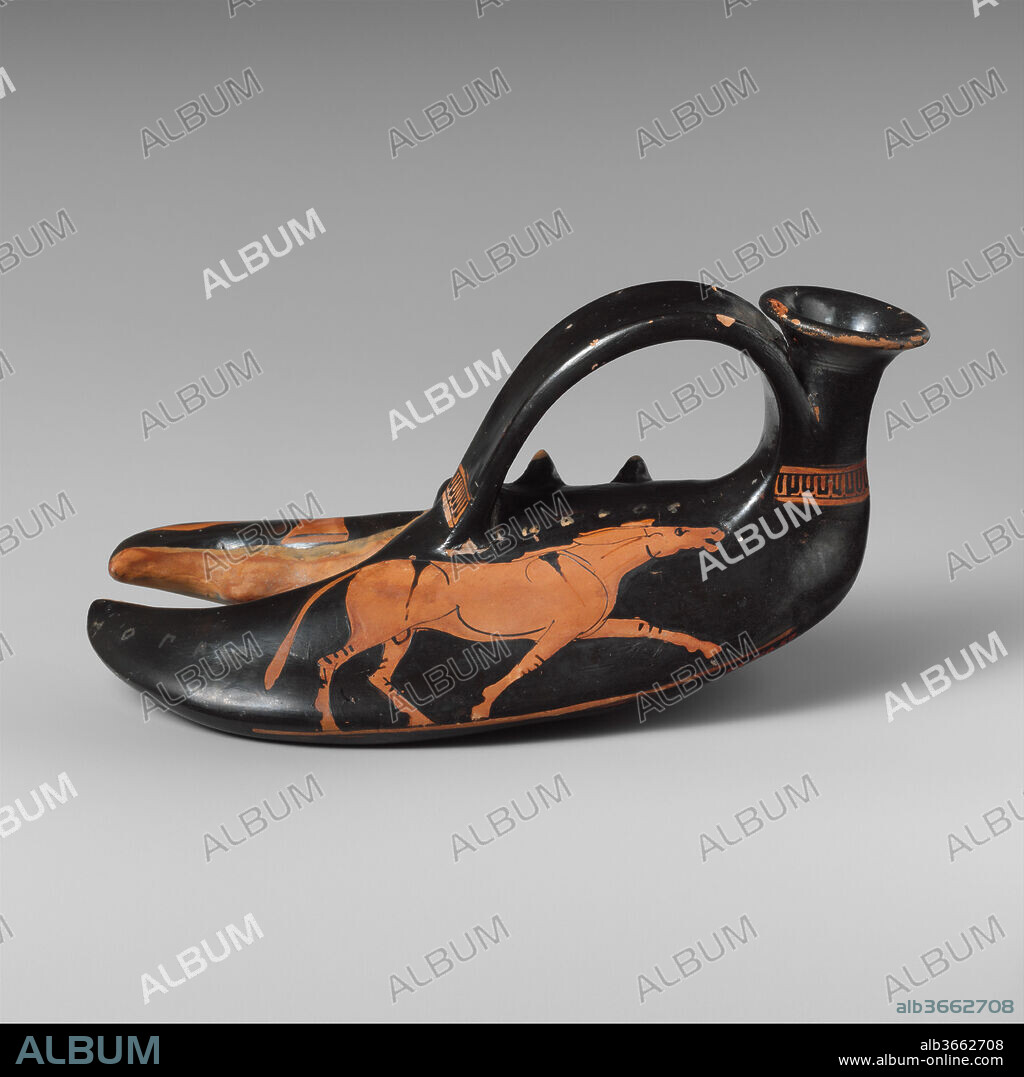alb3662708
Terracotta vase in the form of a lobster claw

|
Add to another lightbox |
|
Add to another lightbox |



Buy this image.
Select the use:

Title:
Terracotta vase in the form of a lobster claw
Caption:
Terracotta vase in the form of a lobster claw. Culture: Greek, Attic. Dimensions: Overall: 2 3/4 x 2 7/8 in. (7 x 7.3 cm)
Other: 6 1/4in. (15.9cm). Date: ca. 460 B.C..
Donkey; keras (drinking horn)
Because so many aspects of Greek life depended on the sea, a vase in the shape of a lobster claw is not surprising. It is, however, exceptional and may be a variant of the askos--a bag-shaped oil container provided with a vertical mouth and strap handle. The Dionysiac iconography of the lobster claw suggests that it was a novelty item used at symposia (drinking parties).
Technique/material:
Terracotta; red-figure
Period:
classical
Museum:
Metropolitan Museum of Art, New York, USA
Credit:
Album / Metropolitan Museum of Art, NY
Releases:
Model: No - Property: No
Rights questions?
Rights questions?
Image size:
3981 x 3982 px | 45.4 MB
Print size:
33.7 x 33.7 cm | 13.3 x 13.3 in (300 dpi)
Keywords:
 Pinterest
Pinterest Twitter
Twitter Facebook
Facebook Copy link
Copy link Email
Email
